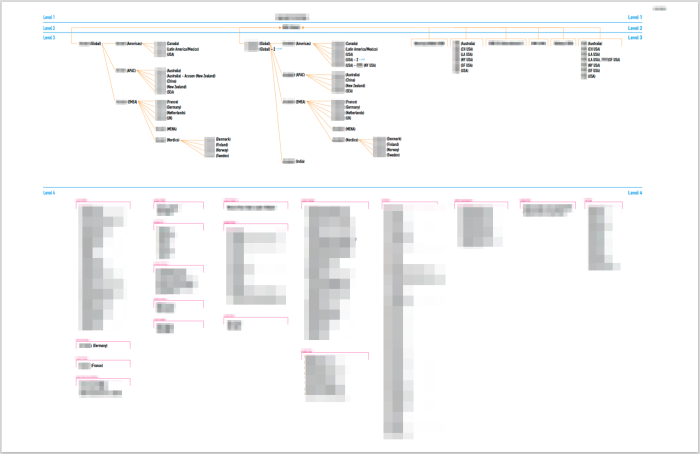My 30,000 ft view: A big data analytics product needs a secure and robust way to provision the data to the right users. The success of the product means increasingly large quantities of data, which can be at odds with the ability to keep track of it all and provide a great user experience.
My 3 ft view: The admin UI to provision data needs to be specific on what is flexible, and what is not. Too much flexibility can increase complexity, which can lead to errors and delays. Wherever possible, the UX should be designed for easy and secure delegation to external admins, in order to reduce the operational load of internal admins.
Discovering the Problem:
This project started when I was sitting in a meeting listening to our largest ($10M+) client’s frustrations about giving the correct data access to their employees. This is a large agency that has many organization layers of business units, brands, and regions. In their world, data needs to be secure between some organizational groups (ex. competing brands), but also needs to be easily shared between others (ex. sister brands).
Our system at the time was so complex, that the project manager had to draw a complex mapping to understand where all the data was, and who had access to it. This was page 1 of 3 pages, of comparable density, that was permanently posted beside her computer screen as daily reference:

Problem to be solved: It takes a lot of time and mental energy to manage how users get access to the right data.
The hypothesis: The data model is built on the wrong assumptions.
What the user needs, expressed in what would believably be their words:
“I need to easily provision data to the right set of users. I want to be confident that I am not giving the wrong users access, as it violates client agreements and could have severe consequences.”
Note: When writing user needs in their words it helps to focus on what they may really want, as it won’t sound right to include technical solutions or company jargon.